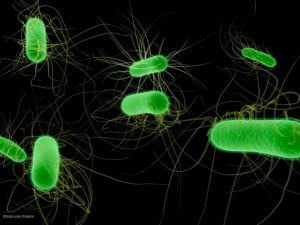Two E.coli outbreaks were in the news this week: one because it was declared officially over by the Centers for Disease Control and Prevention (CDC) and the other because the likely source of the outbreak was revealed months after people became ill. The outbreaks, which together sickened dozens of people and claimed the life of one young girl, were caused by different strains of E. coli but they had one thing in common: while they were ongoing, officials weren’t able to give consumers any food safety advice.
 The outbreak that came to an official end this week began in April, sickened 18 people in nine states and took the life of a 21-month old girl from Louisiana. The outbreak was caused by the rare strain E. coli 0145. Most of those who were sickened live in the southeastern part of the United States. The CDC collaborated with health departments in nine states on the investigation. They extensively interviewed 15 of the victims to determine which foods or other exposures may have caused the illness. But they were never able to identify a source and consequently never able to provide consumers with information that could prevent them from contracting a foodborne illness.
The outbreak that came to an official end this week began in April, sickened 18 people in nine states and took the life of a 21-month old girl from Louisiana. The outbreak was caused by the rare strain E. coli 0145. Most of those who were sickened live in the southeastern part of the United States. The CDC collaborated with health departments in nine states on the investigation. They extensively interviewed 15 of the victims to determine which foods or other exposures may have caused the illness. But they were never able to identify a source and consequently never able to provide consumers with information that could prevent them from contracting a foodborne illness.
The same is true for the other outbreak which also took place in April but was caused by the more common strain E.coli 0157:H7. It sickened nine people California and at least 13 others in Canada. Romaine lettuce was the only commonality that the illnesses in both locations shared, a California Department of Public Health (CDPH) spokesman told Food Poisoning Bulletin this week. But by the time this was discovered, months after the illnesses began, all of the lettuce form the questionable batch had been consumed or thrown out. The lettuce had been distributed in California, Quebec and New Brunswick, but it was far too late for a recall.
Without lettuce samples, laboratory testing was never done to see if the romaine’s genetic fingerprint matched that of the outbreak strain. But because it was the only commonality, CDPH, the U.S. Department of Agriculture (USDA) and the federal Food and Drug Administration (FDA) worked together on a trace-back investigation. They established that the lettuce came form Peter Rabbit Farm, which is owned by Amazing Coachella Inc., in Coachella, Calif. They visited the farm on June 12 and June 13, two months after the first victims became ill. They found no conditions or practices that needed to be changed and no lettuce. The crop from which the potentially tainted batch had been harvested was long gone. The field was empty and consumers are left empty-handed.




